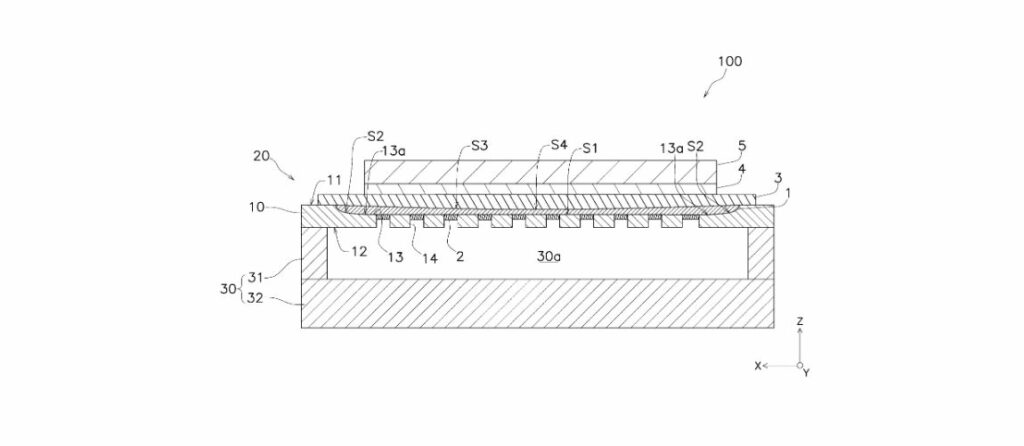A recent patent filed by NGK Insulators, Ltd. introduces an innovative electrolytic cell designed to enhance hydrogen production.
The patent lists a detailed structure comprising multiple components, such as a metal support, hydrogen electrode layer, electrolyte layer, and oxygen electrode layer. This promising development in hydrogen technology showcases NGK Insulators’ inventiveness in advancing renewable energy solutions.
Features and Improvements
The patented technology boasts several unique features that set it apart from existing electrolytic cells. One of the main improvements is the design of the hydrogen electrode layer (1), which includes a curved contact surface (S3) that protrudes towards the metal support (10). This curved surface is designed to optimize the contact area between the hydrogen electrode layer (1) and the electrolyte layer (3), potentially improving the efficiency and durability of the cell.
Potential Applications
This new electrolytic cell’s primary application is hydrogen production through water electrolysis. This technology can be utilized in various industries, including renewable energy, transportation, and chemical manufacturing. By producing hydrogen more efficiently, this technology could significantly contribute to developing cleaner energy systems and reducing carbon emissions.
Market Impact
The adoption of this advanced electrolytic cell could substantially impact the hydrogen market. Enhanced efficiency and lower production costs could make hydrogen a more competitive alternative to traditional fossil fuels. As industries increasingly turn towards sustainable energy sources, this technology could see widespread adoption, driving growth in the hydrogen sector.
Comparison with Existing Solutions
The patented technology introduces a novel design feature compared to existing electrolytic cells—the curved contact surface on the hydrogen electrode layer. Current technologies typically employ flat electrode surfaces, which might not offer the same optimized contact and efficiency level. Additionally, the integration of robust metal support (10) enhances the cell’s structural integrity, potentially making it more durable and long-lasting than its predecessors.
Technical Specifications and Methodologies
The patent documentation provides key technical specifications and methodologies employed in the electrolytic cell design. The cell body is meticulously designed and supported by a metal frame to ensure stability. Detailed attention is given to the arrangement of the hydrogen electrode layer, electrolyte layer, and oxygen electrode layer to improve electrochemical performance. The curved contact surface of the hydrogen electrode ensures better interaction with the electrolyte, enhancing the cell’s overall efficiency during the electrolysis process.
Key Takeaways
The patented electrolytic cell by NGK Insulators Ltd. introduces a highly efficient, durable, and innovative approach to hydrogen production. With its curved hydrogen electrode design and robust structural support, this technology could significantly improve the performance and cost-effectiveness of water electrolysis.





